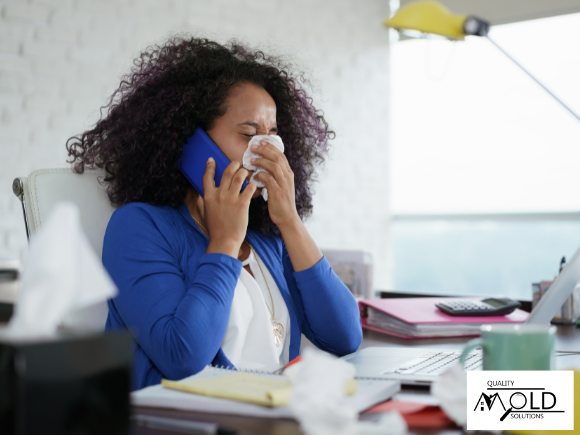A Professional Mold Inspection Can Confirm It
Mold can be a silent intruder in your home, growing unnoticed and causing a range of health problems and structural issues. Detecting mold early is crucial to preventing further damage and ensuring a healthy living environment. Here are the top signs you need a professional mold inspection.
1. Musty Odors
One of the most common indicators of mold growth is a persistent musty odor. Mold has a distinct, damp smell that is often described as earthy or stale. If you notice this smell in your home, especially in areas with poor ventilation, it’s a strong sign that mold could be present. A professional mold inspection can help identify the source of the odor and determine the extent of the mold problem.
2. Visible Mold Growth
Visible mold is an obvious sign that you need a professional mold inspection. Mold can appear in various colors, including black, green, white, and orange. It often grows in damp, dark areas such as bathrooms, basements, and behind appliances. Even if you see only a small patch of mold, it could indicate a larger hidden issue that requires professional attention.
3. Water Damage or Leaks
Water damage from leaks, floods, or burst pipes can create an ideal environment for mold growth. If your home has experienced any water damage, it’s essential to monitor the affected areas closely. Stains, discoloration, or peeling paint on walls and ceilings are signs that moisture is present, which can lead to mold growth. A professional mold inspection can assess these areas for hidden mold and ensure that any potential issues are addressed promptly.
4. Health Symptoms
Mold exposure can cause a variety of health symptoms, especially in individuals with allergies, asthma, or weakened immune systems. Common symptoms include:
- Sneezing and coughing
- Runny or stuffy nose
- Itchy or watery eyes
- Skin rashes
- Wheezing and shortness of breath
If you or your family members experience these symptoms, particularly when at home, it might be time for a professional mold inspection. Mold spores can aggravate existing health conditions and lead to more severe respiratory issues if left untreated.
5. Increased Humidity Levels
High indoor humidity levels can contribute to mold growth. If you notice condensation on windows, walls, or pipes, it’s a sign that the humidity in your home is too high. Using a hygrometer to monitor humidity levels can help you keep them in check. Ideally, indoor humidity should be between 30% and 50%. If you’re struggling to maintain these levels, consider getting a professional mold inspection to identify potential mold hotspots.
6. Recent Flooding? Get a Professional Mold Inspection!
Homes that have recently experienced flooding are at a high risk for mold growth. Even if the water has been removed, moisture can linger in carpets, walls, and furniture, creating a breeding ground for mold. A professional mold inspection is crucial after any flooding event to ensure that your home is thoroughly dried and free from mold.
7. Unexplained Stains or Discoloration
Stains or discoloration on walls, ceilings, or floors can indicate mold growth beneath the surface. These spots may appear as dark patches or streaks and can often be overlooked as minor blemishes. However, they can signal a more significant mold problem that requires professional investigation.


